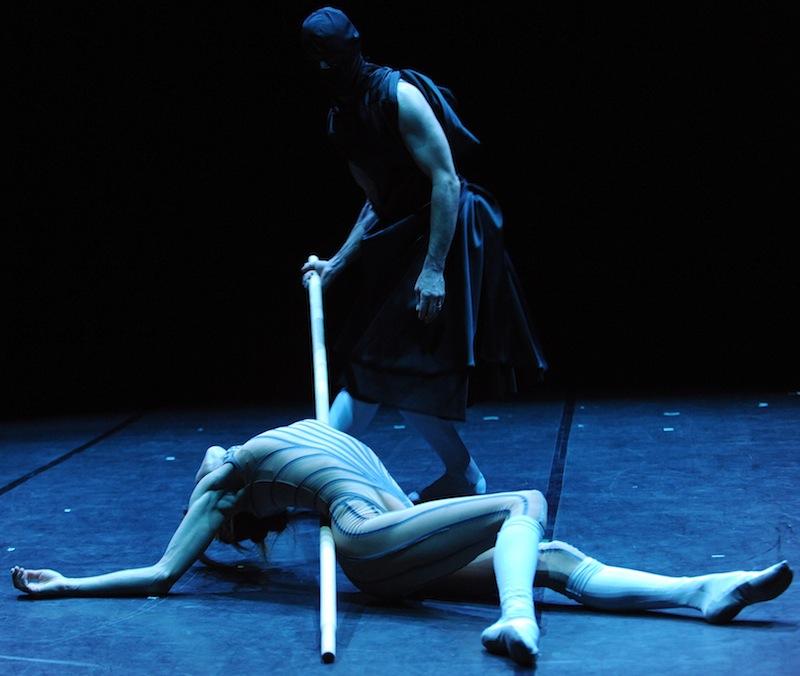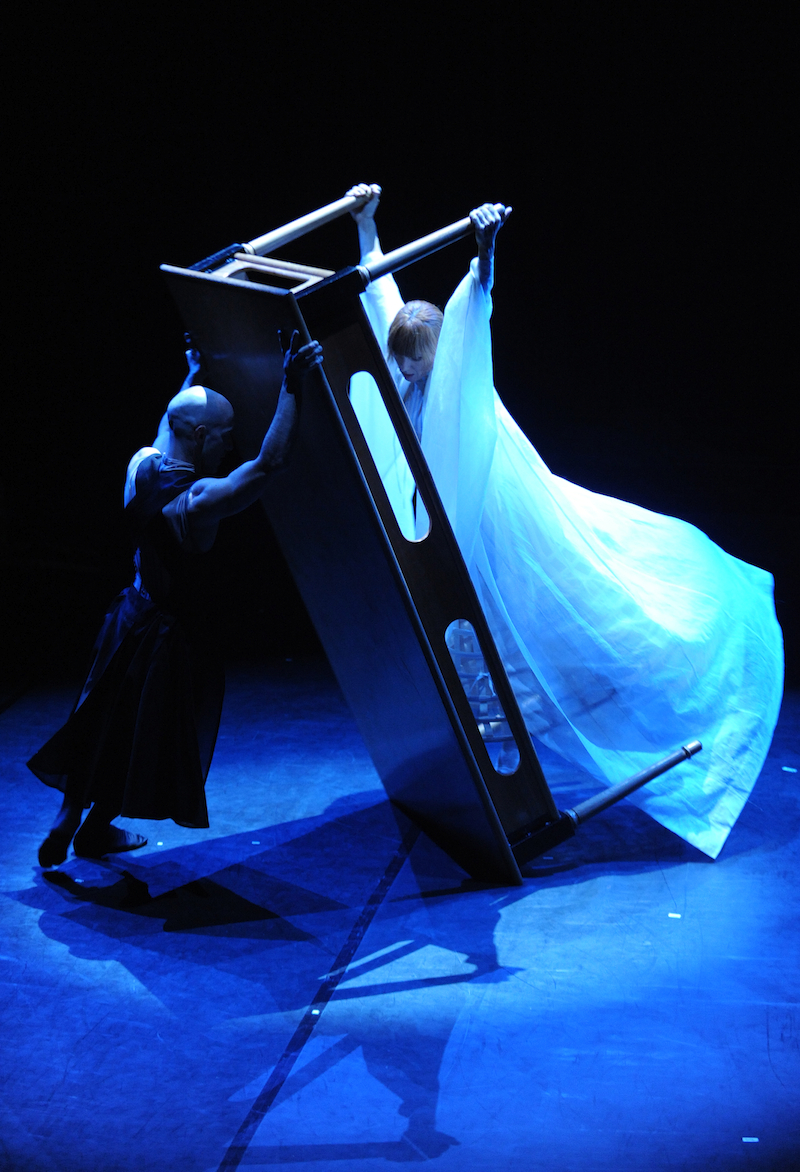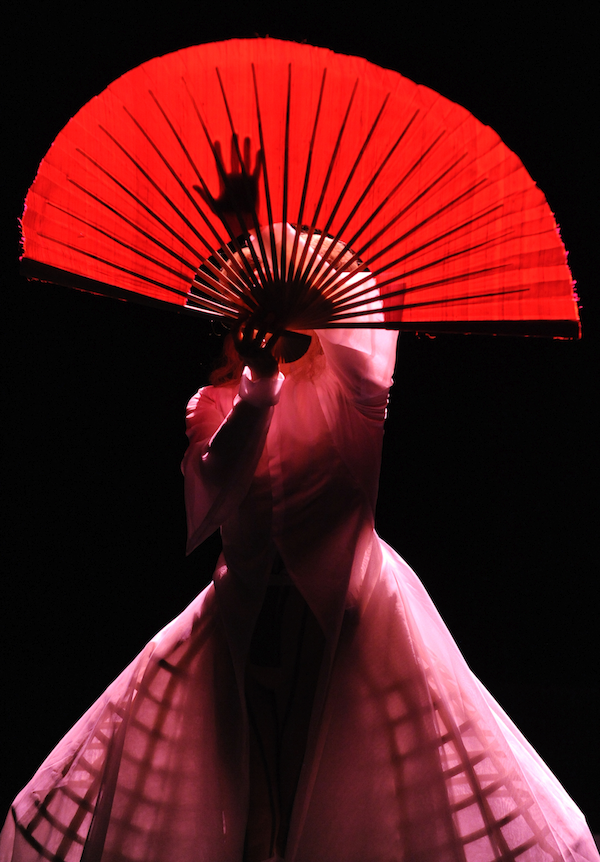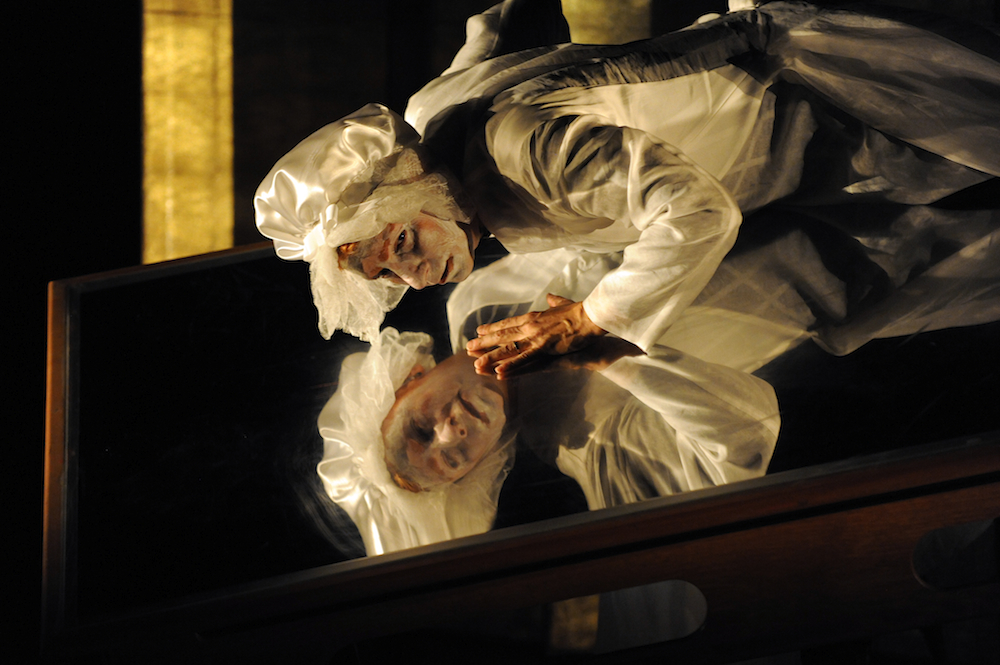Eonnagata, Sylvie Guillem/ Robert LePage/ Russell Maliphant, Sadler’s Wells | reviews, news & interviews
Eonnagata, Sylvie Guillem/ Robert LePage/ Russell Maliphant, Sadler’s Wells
Eonnagata, Sylvie Guillem/ Robert LePage/ Russell Maliphant, Sadler’s Wells
A constellation of stars and a ripping yarn about a cross-dresser - but the result is excessively courteous

With five first-magnitude stars in it you're expecting at least a five-star show from Eonnagata, the collaboration between ballerina Sylvie Guillem, theatre director Robert Lepage, choreographer Russell Maliphant, designer Alexander McQueen and lighting genius Michael Hulls - possibly even the Milky Way. But I can't divvy up more than two stars for the result.
It hurts, because this show has a terrific subject in the 18th-century Chevalier d'Eon, a cross-dressing French aristocrat and spy who lived as a man and then as a woman, survived the French Revolution, and even joined a circus as a freak, before the scalpels of autopsists revealed that he was, after all, a man with testes but not much of a penis. Split personality, sexual ambivalence, exhibitionism, arrogance, isolation, these are unimprovable ideas for dance-theatre. Guillem, with her passion for Japan, meshed excitedly with Lepage and McQueen in using the kabuki tradition of the onnagata (the specialist actor in female roles) to dress this peculiarly baroque tale with rumpled silken clothes and a classy minimalist staging, allowing Hulls to create the sense of place, time and displacement with his lightbox of magic illuminations. Sound designer Jean-Sébastien Coté muddles appetising cocktails from combining the strangely erotic and mysteriously sexless timbre of baroque song with modern electronics, creating waves of echoes that break on one's ears like centuries colliding.
Guillem, with her passion for Japan, meshed excitedly with Lepage and McQueen in using the kabuki tradition of the onnagata (the specialist actor in female roles) to dress this peculiarly baroque tale with rumpled silken clothes and a classy minimalist staging, allowing Hulls to create the sense of place, time and displacement with his lightbox of magic illuminations. Sound designer Jean-Sébastien Coté muddles appetising cocktails from combining the strangely erotic and mysteriously sexless timbre of baroque song with modern electronics, creating waves of echoes that break on one's ears like centuries colliding.
But most of the previews for this production have made much of the international jetset existences of the collaborators and their difficulties in getting together, and it shows. This is a trio of pals who all love each other's stuff and want to help each other grow. So Lepage is encouraged to "dance", Guillem and Maliphant are encouraged to "act", and the sum is much less than the sum of its parts.
A string of episodes go by, barely touching each other's sides. Guillem enters first, playfully, a long-haired boy-girl in a vast scarlet taffeta cape, recounting in her attractive voice a diverting fable about how human beings were once spherical, with eight legs and arms, two faces and two sets of genitals. But the gods got mad with arrogant humans, and Zeus wielded his mighty sword to cleave these self-absorbed human beings in twain, creating men and women, doomed always to seek completion - plus, intriguingly, a few accidents of ‘middle' sex whom he presumably butchered at the wrong angle.
That tale reemerges in the final scene, where the surgeons slice up the octogenarian d'Eon and his two halves, male and female, are at last released. I have a feeling that this start and end may have been thought enough to tie the parcel together.
 Guillem, Maliphant and Lepage each have solo monologues, feeding out a bit more of the Chevalier's story while the other two set up a dance scene, each chunk separated by black-outs like a slide-show. Lepage looks surprisingly young for 51, red-headed, wearing a chevalier's frock-coat with much aplomb and lady's drag with same sagging hopelessness Les Dawson used to adopt. However, he's no mover when the action needs to start. Maliphant looks tremendously formidable with his bald head and precision-cut torso but has a weedy voice. Guillem, more naturally a cross-over artist between theatre and dance, is underused as a dancer.
Guillem, Maliphant and Lepage each have solo monologues, feeding out a bit more of the Chevalier's story while the other two set up a dance scene, each chunk separated by black-outs like a slide-show. Lepage looks surprisingly young for 51, red-headed, wearing a chevalier's frock-coat with much aplomb and lady's drag with same sagging hopelessness Les Dawson used to adopt. However, he's no mover when the action needs to start. Maliphant looks tremendously formidable with his bald head and precision-cut torso but has a weedy voice. Guillem, more naturally a cross-over artist between theatre and dance, is underused as a dancer.
Lepage has clearly taken the helm up to a point, but I feel it's only to halfway, before everybody's diaries got a bit full. And as Juliette Binoche did in her recent collaboration with Akram Khan, the theatre person's presence has caused the emasculation of the choreographer; Maliphant, a master of slithery knottage and knitting, has to produce snippets of uncomplicated basics that Lepage can manage.
Hence Guillem too rarely has the chance to shine her phenomenal dancing light on the stage. Briefly she flares in a solo scene as she sits at a desk in a billowing white dress writing angry letters; gradually her entire body becomes a frenzy of fury, her sleeves slash the air, her skirts furl like thunderclouds as she bounces and cartwheels off her desk - it's magnifique. A couple of other moments are eyecatching, like Maliphant's extraordinary duet with a kimono, or the two men in black hoodies rowing across the sea of death and poking Guillem's bony body with their bleached oars.
Still, too much of this seems to be feeling its way, heavily dependent on McQueen's luxury costumes or Hulls' lighting, until finally there's a marvellous scene that's everything I had hoped for.
 It starts with Lepage as the old freak in his dress dancing in miserable isolation with his reflection on a broken, mirrored table - by clever alchemy the two dancers substitute him, dancing with each other and with the mirror, reflecting and refracting part-visions and halves separating, images, reality, perception, all interchanging. For those few tremendously imagined minutes one holds one's breath, one even weeps: the company of stars evoke at last their own specific, irreplaceable physical poetry about despair, love, loneliness, vanity and inadequacy.
It starts with Lepage as the old freak in his dress dancing in miserable isolation with his reflection on a broken, mirrored table - by clever alchemy the two dancers substitute him, dancing with each other and with the mirror, reflecting and refracting part-visions and halves separating, images, reality, perception, all interchanging. For those few tremendously imagined minutes one holds one's breath, one even weeps: the company of stars evoke at last their own specific, irreplaceable physical poetry about despair, love, loneliness, vanity and inadequacy.
Share this article
The future of Arts Journalism
You can stop theartsdesk.com closing!
We urgently need financing to survive. Our fundraising drive has thus far raised £49,000 but we need to reach £100,000 or we will be forced to close. Please contribute here: https://gofund.me/c3f6033d
And if you can forward this information to anyone who might assist, we’d be grateful.

Subscribe to theartsdesk.com
Thank you for continuing to read our work on theartsdesk.com. For unlimited access to every article in its entirety, including our archive of more than 15,000 pieces, we're asking for £5 per month or £40 per year. We feel it's a very good deal, and hope you do too.
To take a subscription now simply click here.
And if you're looking for that extra gift for a friend or family member, why not treat them to a theartsdesk.com gift subscription?

Add comment